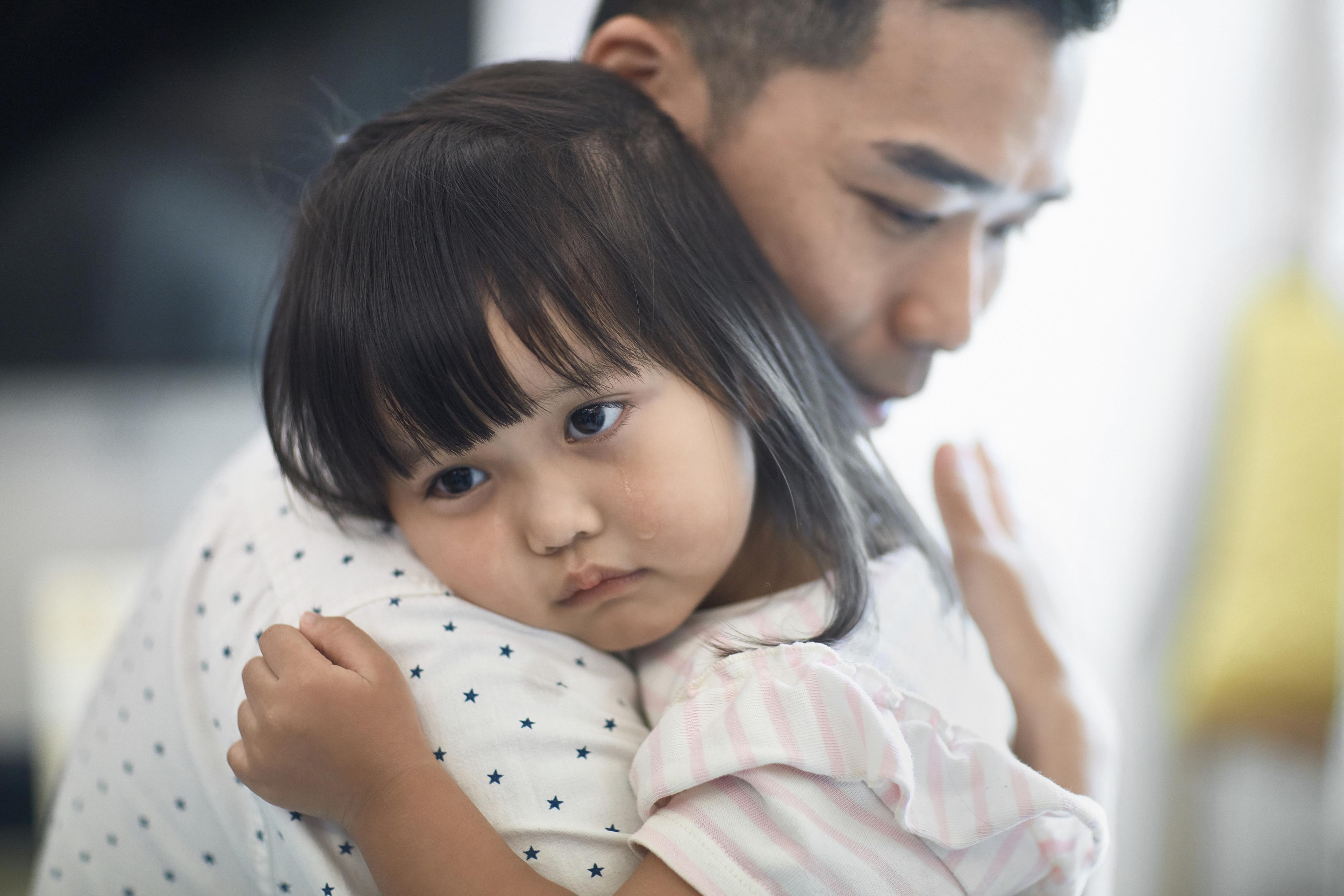How Early Childhood Educators Can Explain Death to Children

You are here
Author’s Note: In the early childhood setting, questions about death have always been likely to arise. Some children will experience losses (family members, friends, pets) and go through the grieving process while they are in your classroom. Teachers can address death as part of learning about life cycles and nature, but they should also prepare themselves for basic questions (like whether or not someone who has died may still be hungry or in pain) and for supporting children and their families after a loved one dies. During the current COVID-19 pandemic, more children have and will continue to experience the death of extended family members and friends. Virtually all of your students will hear, or overhear, about deaths occurring to others in the media and discussions among family members, and they may become worried and confused. Teachers should become prepared for questions about death from all children and to offer support for those children who are grieving a personal loss.
The death of someone close can confuse and overwhelm children. If they don’t already understand what happens when someone dies, it becomes more difficult to cope with a personal loss. Children’s misunderstandings may unnecessarily increase their sense of guilt or shame or increase their fears and worries. If we help young children understand death, we help them cope with a personal loss that has already occurred or prepare them to understand and cope with a personal loss at a later time.
Children who understand the following four concepts will be better prepared to cope with a loss:
- Death is irreversible. An essential first step in the mourning process is understanding that a loss is permanent. Understanding that death is irreversible allows children to begin to mourn rather than wait for the person who has died to return. Even very young children can understand that someone who has died is "all gone".
- All life functions end completely at the time of death. Very young children initially view all things (toys, rocks, cars) as alive. As they grow older, children come to understand that inanimate objects are not alive, but they may still be confused at times. For example, children may not view plants as alive since plants don’t appear to move. Preschool children often don’t understand what life functions are; therefore, they may not realize that all life functions end at death. They may assume a person who has died can feel afraid, cold, hungry, or lonely. Understanding that all life functions completely end with death helps children realize the person who died is not suffering.
- Everything that is alive eventually dies. If children don’t see death as inevitable, they may wonder why a particular death occurred. Often, they conclude it is because of something bad they did or something they failed to do. This can lead to guilt. They may also believe it is because of something the deceased did or didn’t do. This can lead to shame. Understanding that all living things eventually die makes it less likely that children will associate death with guilt or shame.
- There are physical reasons someone dies. Adults can help children understand the physical causes of a death by using brief explanations and simple language at a developmentally appropriate level. While young children often understand that some illnesses are contagious and spread by germs that are too small to see, they generally don’t know how germs cause illness once they get inside the body. They often have misunderstandings, such as believing that colds are caused by exposure to cold weather. They frequently believe that illnesses that are not contagious, such as cancer, may be spread through contact with someone with cancer.
 Understanding the physical reasons behind a death helps minimize possible confusion and feelings of guilt or shame children may experience. In situations where the death is due to a condition that is non-contagious, explaining this to young children may also decrease worries of others, including themselves, dying from the same condition. During the COVID-19 pandemic, children should be helped to understand that, although they may catch the germ from someone who is infected (which is why they should wear a mask, wash their hands, and keep a safe distance from others who don’t live with them when possible), young children are much less likely to get seriously ill according to the most recent research.
Understanding the physical reasons behind a death helps minimize possible confusion and feelings of guilt or shame children may experience. In situations where the death is due to a condition that is non-contagious, explaining this to young children may also decrease worries of others, including themselves, dying from the same condition. During the COVID-19 pandemic, children should be helped to understand that, although they may catch the germ from someone who is infected (which is why they should wear a mask, wash their hands, and keep a safe distance from others who don’t live with them when possible), young children are much less likely to get seriously ill according to the most recent research.
Most children grasp these concepts by 5 to 7 years of age. Sometimes they do so at significantly younger ages if they have experienced a personal loss. Early childhood educators can help children learn these concepts prior to a personal loss through classroom discussions, such as responding to naturally occurring deaths of classroom pets or dead animals found in nature. Older children usually understand the four concepts more fully, but they are also likely to have questions when a death touches them personally. They may wonder if they were responsible. They may worry that others they care about will die soon; this is particularly a concern during the current pandemic when the deaths of so many people are being discussed around them. Understanding the concepts is different from accepting them in the context of a personal loss—but understanding is a necessary precondition to acceptance. Very young children may understand the irreversibility of death, but even adults have difficulty accepting that someone they love is gone forever.
Children of any age may find comfort in their family’s faith-based beliefs (such as what happens to a person’s spirit after death). However, some religious concepts may be too abstract for young children and cause confusion. In addition to a family’s faith-based beliefs, it is important for children to understand the physical realities about what happens to the body. Teachers can encourage children who ask faith-based questions about death to discuss their questions with family members.
Check Children’s Understanding
When adults discuss death with children, they often choose words they feel are gentler. However, less direct terms may be confusing. If children hear that someone who died is in a “state of eternal sleep,” for example, they may be afraid to go to sleep. Especially with younger children, it is important to use the terms dead and died.
It’s useful to check children’s understanding of the four concepts about death. These steps may be helpful:
- Start by asking children what they understand about death. (“Your mother mentioned that your grandfather died this weekend. What do you think it means when someone dies?”)
- Give children simple and developmentally appropriate explanations. (“When someone dies, their body stops working—the person no longer can see or hear or feel pain or hunger. That’s why we can bury the body.”)
- Ask children to explain back to you what they understand. (“I’d like to see what you understand about death now that we have talked about it. What happens to someone’s body after the person has died?”)
- Correct any misunderstandings or misconceptions. (“You mentioned that you worry that you may have caught cancer from your grandfather before he died. While some illnesses can be spread from person to person, cancer isn’t caused by a germ and can’t be spread the way a cold can. You don’t have to worry about catching cancer from someone who has cancer.”)
These four checks for understanding—and the four concepts—are also useful for children with intellectual disabilities. Their understanding of the concepts will usually be on a level consistent with their level of general cognitive functioning. Even if they cannot fully comprehend the concepts or communicate their understanding, they are likely to be deeply affected by a close personal loss and will benefit from efforts to help them better understand.
Conclusion
It is important to keep in mind that different ways of grieving are to be expected, but the fundamental experience of grief is universal. Now more than ever, it is imperative for teachers to aspire to achieve a general sensitivity to the unique needs of children and families coping with loss.
This article is an adaptation of “Helping Young Children Grieve and Understand Death,” by David J. Schonfeld, published in the May 2019 issue of Young Children. You can read the full article at NAEYC.org/yc/May2019.
Additional Resources
For more information about how to help young children through the grieving process, see “The Toads: Refocusing the Lens,” by Amanda Messer, a Voices of Practitioners article published in the December 2020 issue of Young Children at NAEYC.org/toads-refocusing-lens, as well as David J. Schonfeld’s article “Helping Young Children Grieve and Understand Death,” and Dani Porter Born’s article “Life and Death in Nature: Outdoor Discoveries Bring the Topic of Death into the Preschool Classroom,” both featured in the May 2019 issue of Young Children at NAEYC.org/yc/may2019.
To learn more about how to discuss death and how to support grieving children, visit the Coalition to Support Grieving Students website at grievingstudents.org. There, you will find informative modules on developmental and cultural considerations, what to say to a grieving child and how to talk with and support grieving children, reactions and triggers, crises and special circumstances, self-care, and much more. Free written materials for educators, parents, and other caring adults about how to support grieving children can also be downloaded or ordered. You will also find a range of free materials, including videos and written materials, on explaining the COVID-19 pandemic to children and the unique challenges to supporting grieving children during this time.
Photographs: © Getty Images.
Copyright © 2021 National Association for the Education of Young Children. See permissions and reprints online at NAEYC.org/resources/permissions.
 This article supports the following NAEYC Early Learning Programs standards and topics
This article supports the following NAEYC Early Learning Programs standards and topics
Standard 2: Curriculum
2G: Science
Standard 3: Teaching
3E: Responding to Children’s Interests and Needs
David J. Schonfeld, MD, is the director of the National Center for School Crisis and Bereavement (schoolcrisiscenter.org). The Center coordinates the Coalition to Support Grieving Students.